Description
Growing your own fabric with bacteria
Sommaire
Sommaire
- 1 Description
- 2 Sommaire
- 3 Introduction
- 4 Video d'introduction
- 5 Étape 1 - Question ? - we have the answers!
- 6 Étape 2 - Preparation of the culture liquid
- 7 Étape 3 - Setting up the SCOBY
- 8 Étape 4 - Fermentation
- 9 Étape 5 - Fin de la culture et début du séchage
- 10 Étape 6 - Félicitations !
- 11 Notes et références
- 12 Commentaires
Introduction
Concept inspired by BioCouture, and shared by Open BioFabrics. With this tutorial you can grow your own fabrics with ingredients from your kitchen and S.C.O.B.Y. What is a S.C.O.B.Y? It’s a Symbiotic Colony of Bacteria and Yeast. We will be using the one that comes from kombucha tea. So you can easily find it in an organic food store or from a kombucha tea drinker.
Ce tuto s'adresse aux personnes intéressées par travailler avec du cuir non issu des animaux. Ce tutoriel est au niveau de prototype. La recherche scientifique sur ces nouveaux matériaux est récente et demande encore du développement pour arriver à des caractéristiques d'étanchéité, mécaniques intéressantes. En l'état actuel des choses, les caractéristiques de ce tissu ne sont pas celles du cuir.
Comme le précise Open BioFabrics:«Aussi prometteur que cela puisse paraître, il y a encore quelques petits problèmes techniques à résoudre avant que cette trouvaille révolutionnaire ne puisse être définitivement adoptée. Ce matériau vegan-friendly est biodégradable (un autre plus) et quand il est mouillé il se ramollit et perd donc son intégrité structurelle. Les températures froides le rendent aussi fragile. Un peu gênant quand même pour passer une après midi d’hiver à Paris. L’équipe de chercheur travaille actuellement sur l’amélioration de ces points. Il n’en reste pas moins qu’ils sont confiants et qu’ils pensent trouver des solutions rapidement.»
Youtube
Étape 1 - Question ? - we have the answers!
- Which tea should I use? The SCOBY grows best in black tea as it has the most phytonutrients, but you can experiment and use almost any tea, except teas that can contain essential oils such as Earl Grey (contains bergamot).
- What is “The Starter”? It’s the fermented tea liquid that your SCOBY grows in. When you are starting a new batch of SCOBY, you can add a few cups of the liquid from the previous batch to make it grow faster.
- The SCOBY produces gas? It’s a sign of good fermentation. If you leave the bubbles, your new culture may not grow consistently, so be aure to spread the culture out evenly on the surface of the liquid.
- What is the best temperature to cultivate? The ideal temperature is 25C. Under this temperature, the growth will be a bit slower. Avoid a temperature under 17C, it will take too long.
- What is the best temperature to cultivate? The ideal temperature is 25C. Under this temperature, the growth will be a bit slower. Avoid a temperature under 17C, it will take too long.
- Should we grow under sterile conditions? Not necessarily, but you should wash your hands and all tools before you start.
- What size should the culture tank be? A container sized 17x20x6 minimum depth for a 220cl preparation- according to Suzanne Lee! Under bed plastic trays (56x77x17cm) are ideal for 8-10 liter preparations.
- Does the culture smell? This is a fermentation process. Depending on personal senstivity, people will detect an odor of vinegar. The kombucha SCOBY and vinegar culture are closely related and both made from cellulose-spinning acetobacter.
Étape 2 - Preparation of the culture liquid
This first step lasts about 1 hour :
- Boil water
- Let the tea infuse for 15 minutes
- Dilute sugar
- Let the mix cool down. Temperature under 30°Celsius
Étape 3 - Setting up the SCOBY
This step lasts about 5 minutes. It is very important the liquid is below 30°Celcius, before adding the other ingredients: - to prevent odor vinegar emission - not to kill the starter and SCOBY
- Pour the vinegar + add mix previously made + the Starter Mix
- Add your SCOBY
- Cover the tray and protect it from light
Étape 4 - Fermentation
This stage lasts about 15 days. If you want a thin sheet, a SCOBY mat of 5mm is thick enough. If you want a fabric like leather, wait until your SCOBY mat is about 2 cm in thickness.
- Après 5 jours à l'ombre, votre Scoby commence à grandir.
- Régulièrement déplacer le Scoby en douceur pour se débarrasser des bulles.
Étape 5 - Fin de la culture et début du séchage
Cette étape dure environ 7 jours. Vous pouvez faire sécher votre Scoby sur une planche de bois, de plastique ou de verre ... En fonction du support, le résultat sera un peu différent.
- Laver votre Scoby avec de l'eau froide légèrement savonneuse
- Faire sécher votre Scoby sur une planche légèrement inclinée.
Étape 6 - Félicitations !
La textile est prêt. Vous pouvez le teindre, le couper, le coudre... A vous de jouer
Notes et références
Open BioFabrics conçoit un kit de production pour que chacun puisse facilement cultiver SCOBY à la maison. Plus d'informations sur le hackpad de l'OSCEDay's
Rennes-2016 : https://hackpad.com/collection/qDzscYMboLf
Published
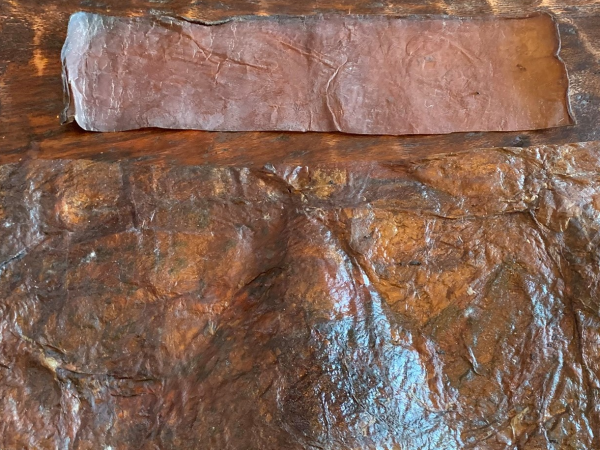
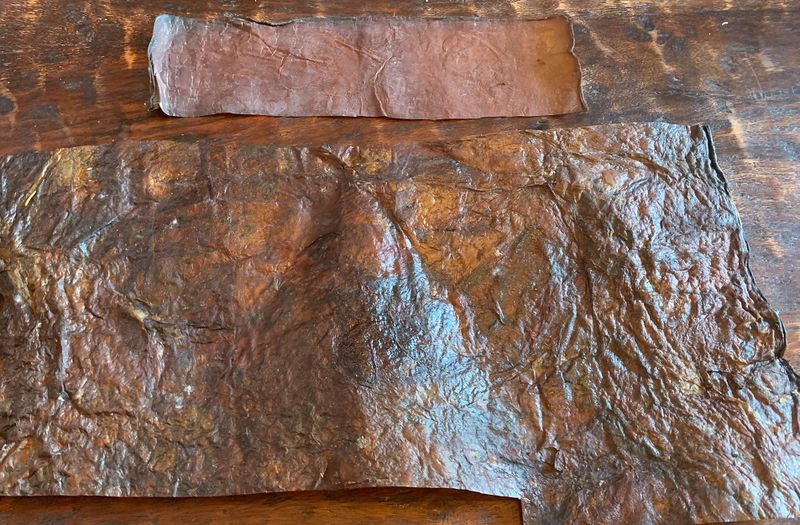
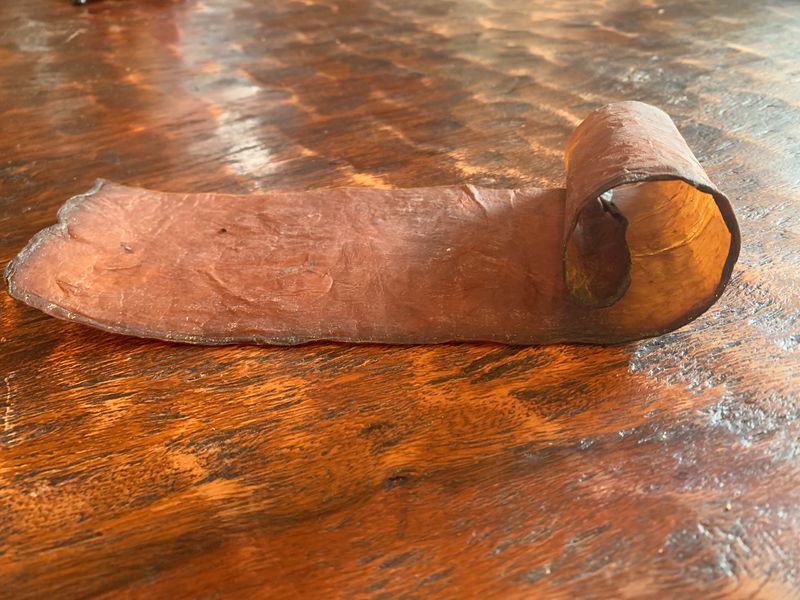

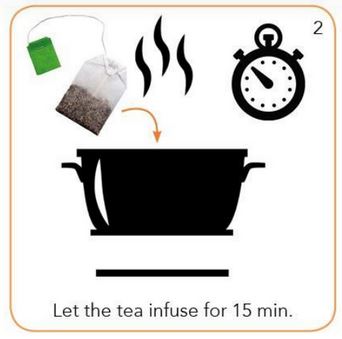
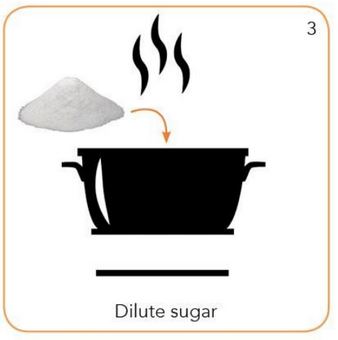

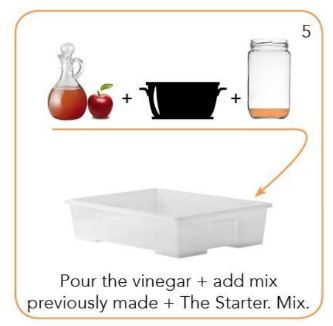
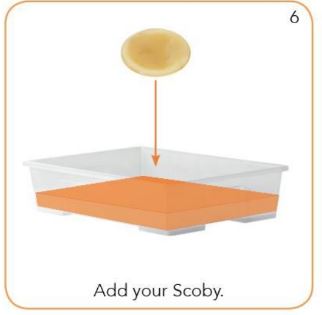
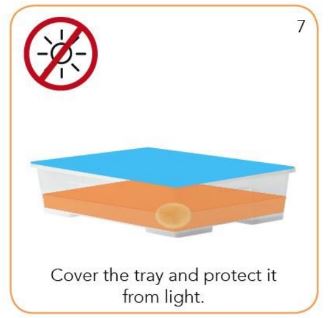
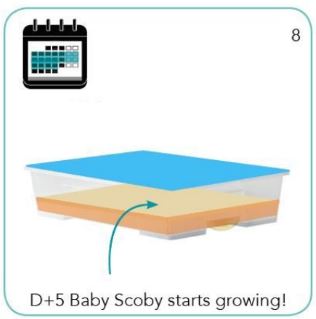
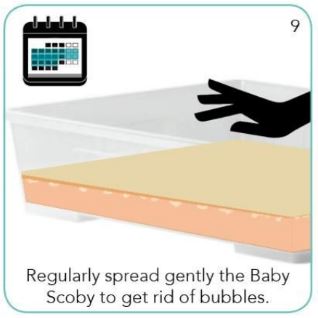
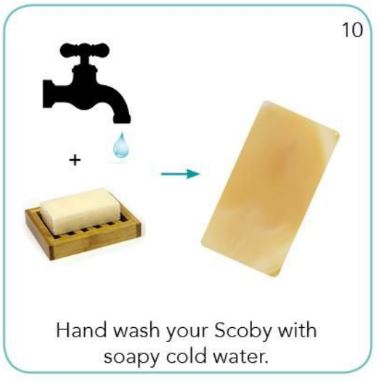
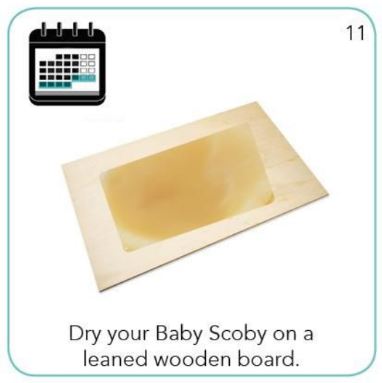
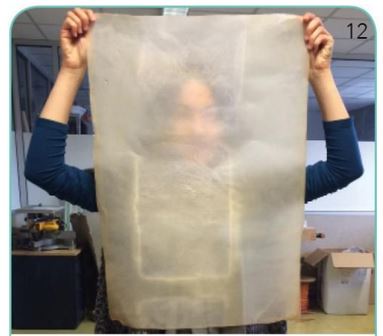
 Français
Français English
English Deutsch
Deutsch Español
Español Italiano
Italiano Português
Português